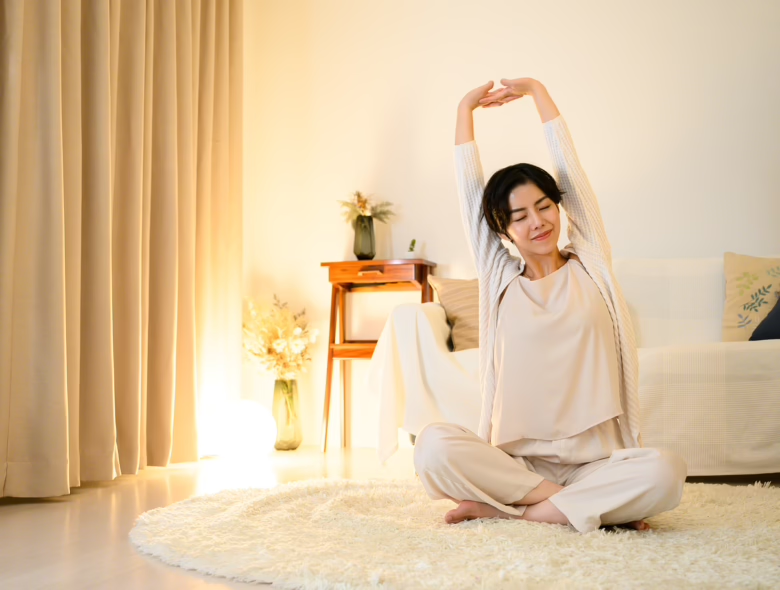To create a comfortable space, it’s important to choose lighting that suits the room’s purpose and vibe.
For instance, warm lighting in the living room can help you relax. In contrast, bright daylight lighting is ideal for kitchens or workspaces where clarity and focus are crucial. For the bedroom, incorporating indirect lighting or lighting with a dimming function can help create a calming environment perfect for unwinding before bed.
In this article, we’ll introduce ways to choose the most comfortable lighting for each room in your home. If you’re looking to enhance your living space with the perfect lighting, feel free to use this article as a reference.
At Village House, we offer wonderful properties all across Japan, starting from just ¥20,000. If you’re searching for a new home, be sure to check out our website!
How to choose comfortable lighting
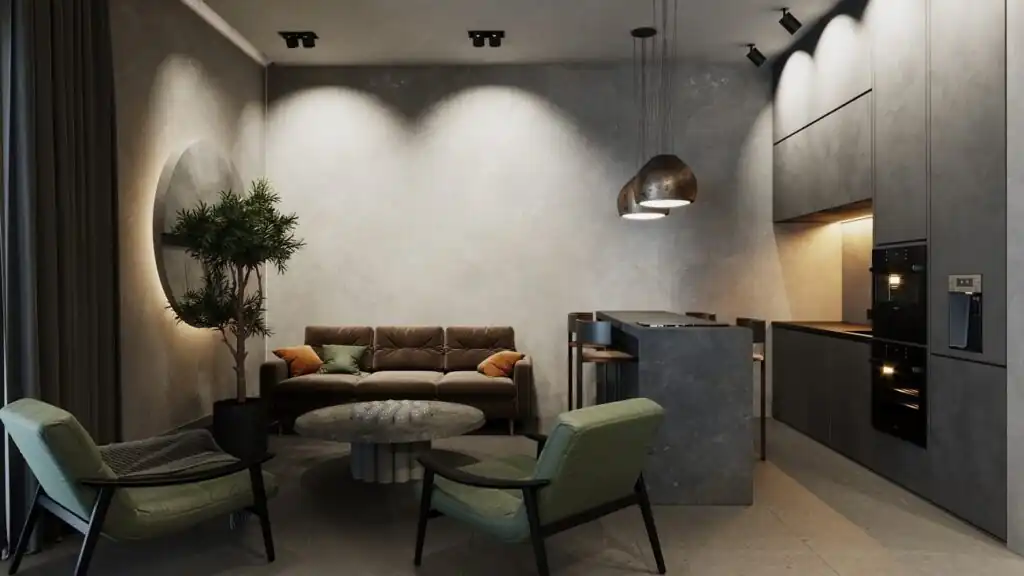
First, let’s explore how to choose the ideal lighting. For tasks such as studying or detailed work, as a guideline, the recommended brightness is approximately 30–40W per tatami mat (about 1.6 square meters). For example, an 8-tatami room would require 240–320W, while a 10-tatami room would need 300–400W.
However, for spaces meant for relaxation like bedrooms, a softer brightness of 15–20W per tatami mat is ideal. As a guideline, an 8-tatami room would require 120–180W, while a 10-tatami room would need 150–200W.
With 15–20W per tatami mat, it can provide enough brightness for reading while preventing eye strain. Instead of relying on a single lighting fixture to provide enough brightness in the room, consider combining pendant lights and table lamps to add depth and style to your space.
Five reasons why LED bulbs are so popular

- Energy-saving and economical
LED bulbs consume significantly less energy compared to conventional incandescent or fluorescent bulbs, making them highly energy-efficient. To achieve the same brightness, LEDs only require about 1/6 to 1/8 of the power used by incandescent bulbs, resulting in significant savings on electricity bills.
- Long lifespan
The lifespan of LED bulbs is approximately 40,000 hours, which is overwhelmingly longer than incandescent bulbs (approximately 1,000 hours) and fluorescent lights (approximately 6,000 to 10,000 hours). In addition, LED bulbs do not need to be replaced as frequently, reducing both time and costs.
- Environmentally friendly
LED bulbs are eco-friendly due to their low energy consumption, which helps reduce overall energy usage. Additionally, LED lights do not contain mercury, making them a safer and more sustainable choice for the environment.
- High safety
LED bulbs generate very little heat and do not get as hot as incandescent bulbs. This significantly reduces the risk of burns or fire hazards, making them a much safer lighting option.
- Wide range of designs and features
LED bulbs come in various designs and functions, including dimming and color-changing functions, as well as smart light options that can be controlled via a smartphone. They are perfect for indirect lighting or decorative lighting, making them useful for enhancing the ambiance of the space.
Moreover, LED bulbs come in the following types of light colors. To create a comfortable atmosphere, warm white lighting with a warm ambiance is highly recommended.
- Warm white: An orange-toned light that creates a warm ambiance.
- Daylight white: A light that closely resembles natural sunlight.
- Soft white: A slightly more natural tone than daylight white.
- White: A light that is whiter than daylight white.
- Cool daylight: A bright white light with a bluish tint.
Living room lighting
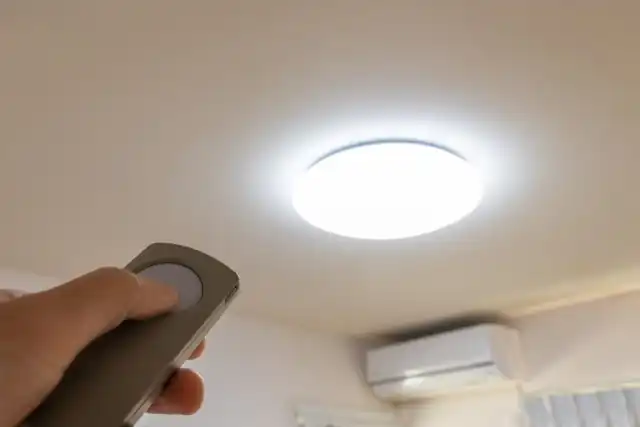
- Ensure the brightness is appropriate based on the size of the living room
It’s important to adjust the brightness according to the size of your living room. Generally, a brightness of 15W to 20W per tatami mat is recommended. For example, a 10-tatami living room would require 150–200W. However, since the perception of brightness varies depending on the size of your family and the room’s intended use, choosing lighting with a dimming function can provide flexibility for you to adjust the brightness however you prefer.
- Select the type of lighting and where to place it
For lighting in the living room, we recommend using ceiling lights that are attached directly to the ceiling. Ceiling lights can illuminate the entire space evenly without obstructing movement. On the other hand, pendant lights are visually appealing but can interfere with people’s movement, making the installation location and height need to be taken into consideration. Moreover, pendant lights should be installed at a height of at least 190 cm from the floor to prevent people from bumping their heads.
- Choose lighting that suits your family’s lifestyle
The living room is a shared space for the whole family, and the brightness needed varies depending on how each person uses the space and their preferences. For activities like reading or studying, brighter lighting is necessary, while softer light is more suitable for relaxing. It is a good idea to choose lighting with dimming and color adjustment functions so that you can set the brightness and color temperature to accommodate different needs.
Dining room lighting
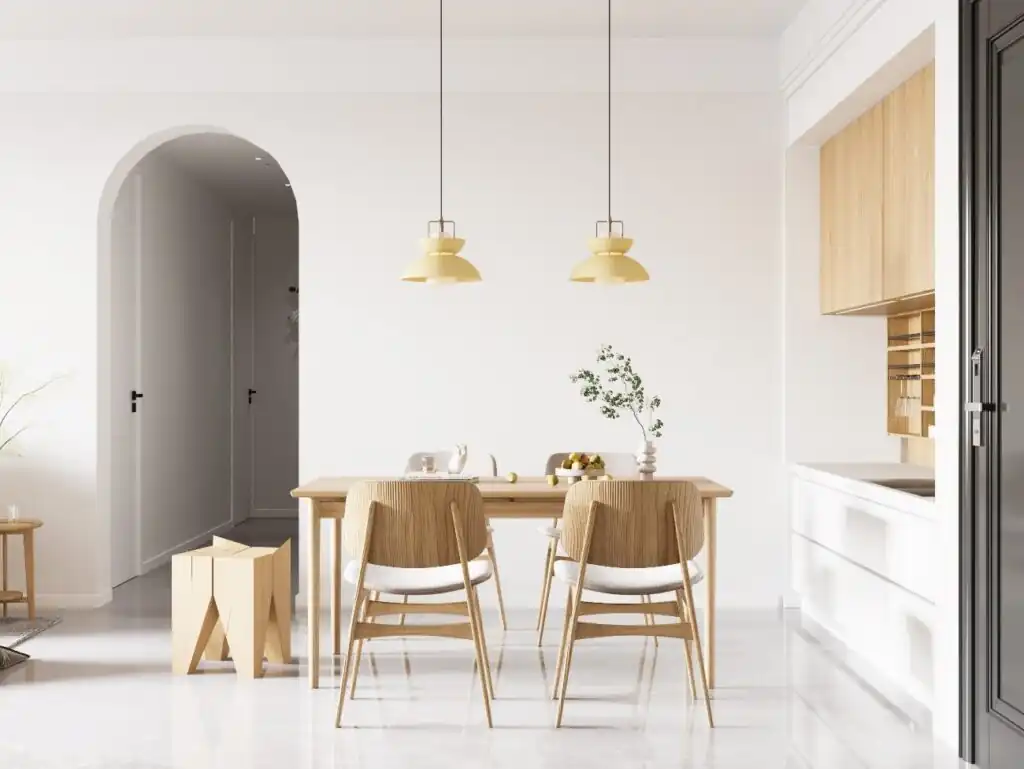
- Use pendant lights
For lighting in the dining room, pendant lights hanging from the ceiling are a great choice. Pendant lights serve as a stylish accent for the interior, and when they effectively illuminate the area above the table, they create a three-dimensional effect in the space, further enhancing the atmosphere of the dining table.
- Brightness guideline
The recommended brightness for a dining room is 15 to 20W per tatami mat. For example, a 6-tatami dining room would require 90W to 120W of lighting. Additionally, choosing an orange-toned warm white light bulb can create a warm atmosphere at the dining table.
- Adjust the installation height
The appropriate height for pendant lights is 60 to 80 cm above the tabletop. Setting the light at this height will evenly illuminate the entire table while minimizing glare. To make adjustments easier, it’s recommended to choose pendant lights with an adjustable cord length.
- Choose the shade material
The way the light spreads and the atmosphere will change depending on the material of the shade of the pendant light. A shade made of light-transmitting materials will diffuse soft light and create a relaxing space. On the other hand, a shade made of opaque materials will focus the light downward, creating a moody vibe with shadows.
Kitchen lighting
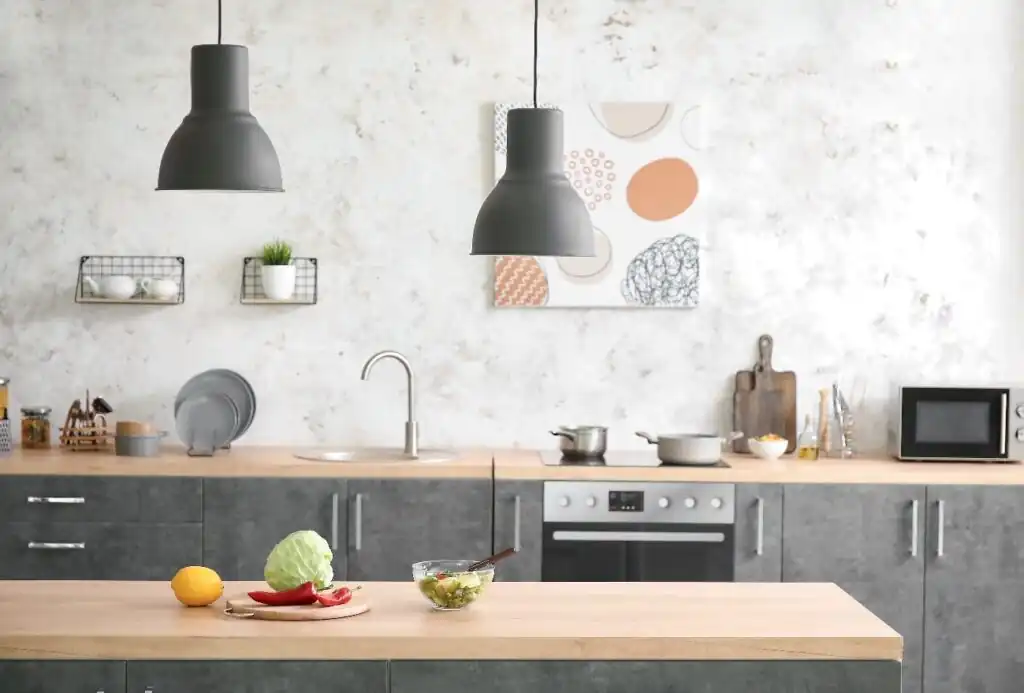
1. Importance of brightness for kitchen lighting
In the kitchen, it’s essential to ensure sufficient brightness so that you can work easily. Daylight white lighting, which closely resembles natural sunlight, is recommended as it provides clear visibility and makes it easy for you to check the freshness of vegetables and meat, creating a comfortable working environment.
2. Use easy-to-install auxiliary lighting
To brighten your kitchen even more, consider adding LED bar lights with a plug-in outlet. Some types can be attached with magnets or fixed with double-sided tape, making them easy to install. When installing the lights, make sure to position them so that they do not shine directly into your field of vision, ensuring an environment that is gentle on your eyes.
Study room lighting
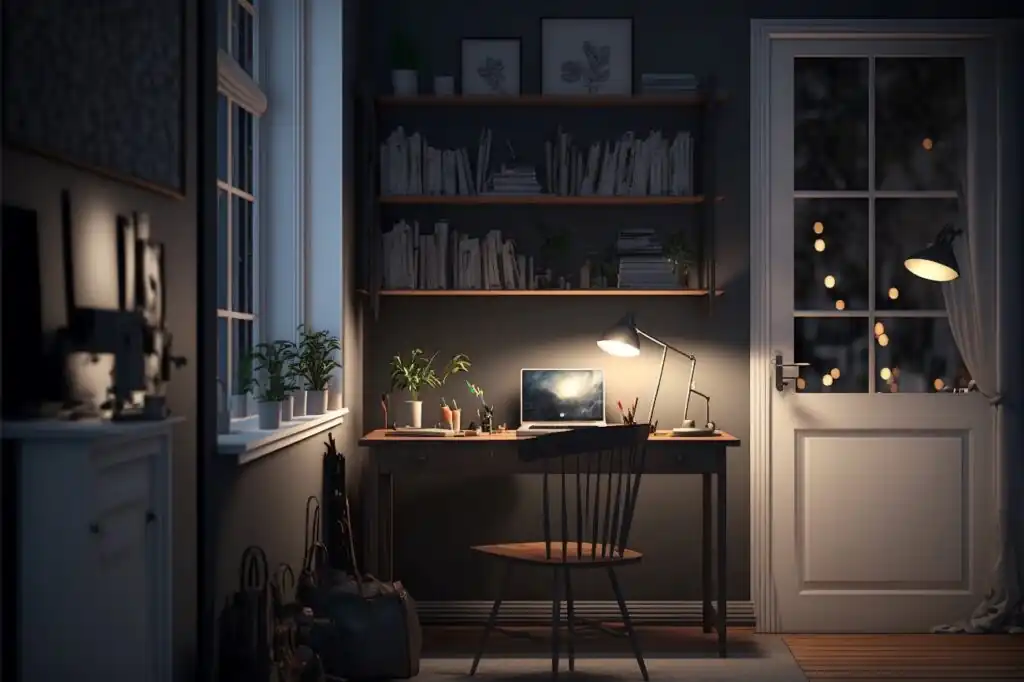
A study room is your own private space. For activities like reading or working on the computer, you can spend your time more comfortably with indirect lighting rather than direct lighting. Recommended lighting options for a study room include LED desk lamps and LED stand lights.
Additionally, plug-in bracket lights, which are easy to install, can be very convenient. By incorporating several lighting fixtures, you can ensure sufficient brightness for work or reading while also creating an eye-friendly environment.
Bedroom lighting
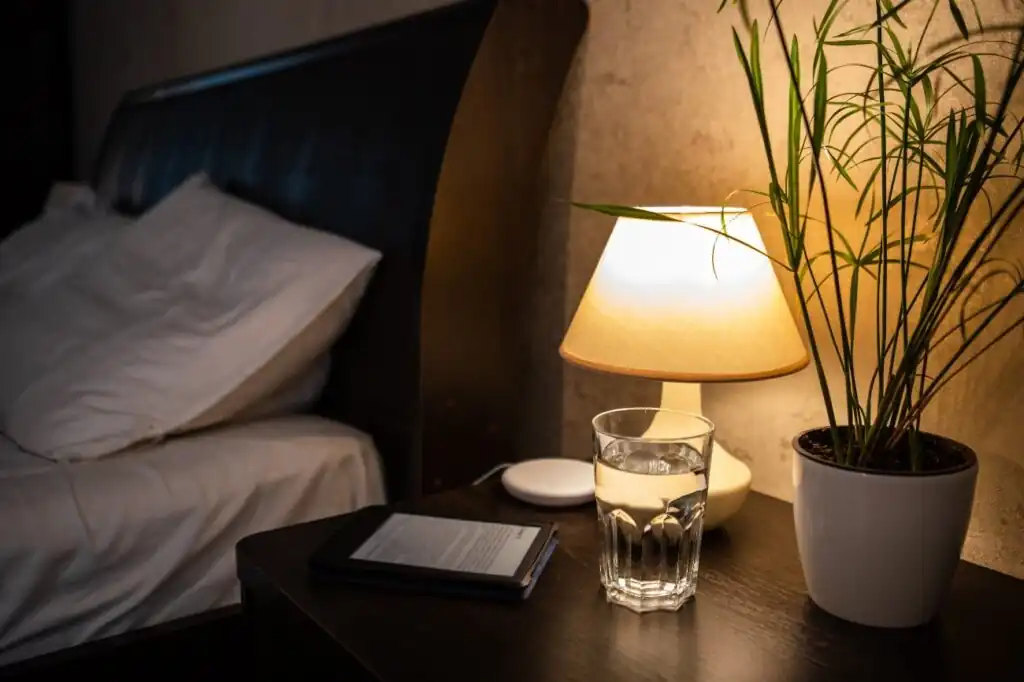
- How to choose the main lighting
For the main lighting in the bedroom, ceiling lights and pendant lights are both great options. Ceiling lights are installed on the ceiling and can illuminate the entire room evenly. On the other hand, pendant lights have a high design quality and can serve as an accent piece to enhance the space.
- Use auxiliary lighting
For reading or relaxing, incorporating floor lamps or table lamps as auxiliary lighting is highly recommended. Floor lights are tall and give depth to the room. Meanwhile, placing a table lamp next to the bed provides a soft light that illuminates your space comfortably, making it a convenient option.
At Village House, there are no security deposit, key money, handling fees, or renewal fees(※). If you’re looking to save on initial costs and renewal fees, feel free to contact us!
※Depending on the results of the screening process, a security deposit may be required.
Related articles:
- How to Replace a Lightbulb? Recommended Lighting Options for Your Apartment
- How to Make a Small Apartment Feel More Spacious
- How Interior Design Influences Your Mood

Hello, I’m Machiko Doi, a freelance writer who writes about housing and living in Japan.
I live in an 80-year-old house that I inherited from my grandparents along with my two shelter cats and daughter.
We live a relaxed life while repairing the house.
I like to cook vegetables from the garden and fresh fish caught by my father, and enjoy them with cold beer on a hot day or hot sake on a cold day.


